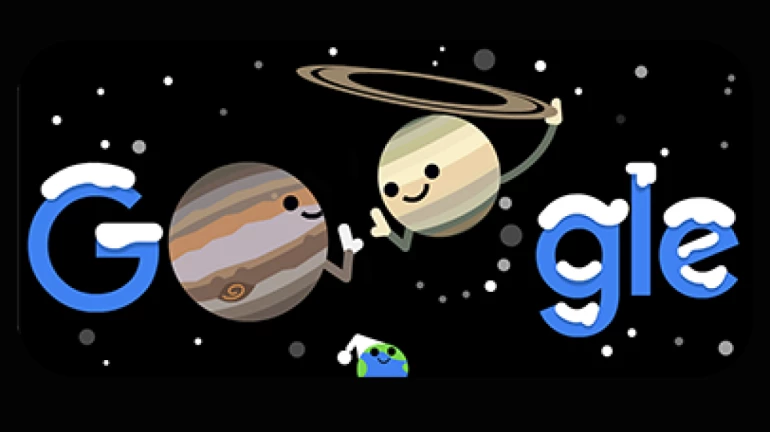
The team at 'Google' is known for the doodles they make to celebrate achievements and remember special occasions. With an aim to celebrate Winter 2020 and The Great Conjunction, Google, on December 21, 2020, made an animated graphic.
This event would mark the visual overlap of two planets - Saturn and Jupiter - during the night, and as per experts, The Great Conjunction is a rare phenomenon which the world would witness. Besides this, the doodle is also dedicated towards the Northern Hemisphere's first day of winter, which is the longest night of the year
The rare astronomic event said to occur tonight on December 21 has been on the calendar for science enthusiasts as Saturn and Jupiter will be seen forming a 'double planet' due to the overlap. This event was last seen in 1623 and hasn't been seen for almost 800 years ago. The previous event was witnessed 13 years after the first telescope was built by Galileo.
NASA has stated that the event will not occur for the next 60 years until 2080. The team took to the website and shared the information for the ones wish to experience the celestial event. Here's how one see this phenomenon for themselves
 Credits: NASA website (NASA/JPL-Caltech)
Credits: NASA website (NASA/JPL-Caltech)





